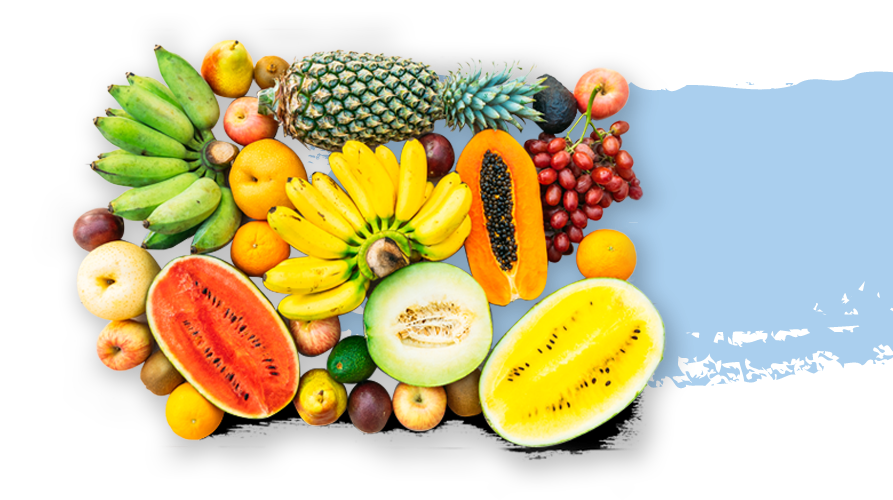Thailand is a major exporter of frozen seafood, including shrimp, squid, and fish. Other major frozen food export items from Thailand include fruits, vegetables, and prepared meals. The country has a well-developed cold chain infrastructure and processing facilities, allowing it to export a wide variety of frozen food products to markets worldwide. Additionally, Thailand's reputation for high-quality agricultural products and its strong food safety regulations also contribute to its competitiveness in the global frozen food market

Shrimp is one of the major frozen food export items from Thailand. The country is one of the largest exporters of shrimp in the world, with a significant proportion of its shrimp exports going to markets in the United States, Japan, and the European Union. Thailand's shrimp industry has been increasing recently, focusing on wild-caught and farmed shrimp.
The country has a well-developed infrastructure for shrimp farming, including hatcheries, feed mills, and processing facilities. Additionally, the industry benefits from a relatively low cost of labor, which helps to make Thai shrimp exports competitively priced. However, in recent years the industry has faced some challenges, such as disease outbreaks and environmental concerns. The sector has alsobeen ihas alsoing sustainable practices to ensure the industry's lonindustry's long-term viabilityessential to the Thai economy and employs many people.

Thailand is a major shrimp exporter, with most exports going to markets in the United States, Japan, and the European Union. According to data from the Thai Frozen Foods Association (TFFA), in 2020, Thailand exported around 675,000 metric tons of shrimp, with a value of about $4.5 billion. The country has a well-developed infrastructure for shrimp farming, including hatcheries, feed mills, and processing facilities, which allows it to produce and export large quantities of shrimp. Additionally, the industry benefits from a relatively low cost of labor, which helps to make Thai shrimp exports competitively priced.
Thailand is one of the largest exporters of shrimp in the world, but it is not the only country that exports shrimp. Other major shrimp exporting countries include India, Vietnam, Indonesia, and Ecuador. The industry's competitiveness is determined by production cost, quality, and environmental regulations.
The shrimp industry is an essential contributor to the Thai economy and provides employment for many people in the country. Still, the industry employs such disease outbreaks and environmental concerns, which have led to some fluctuation in outbreaks in export numbers. Theconcernsry also has been implementing sustainable practices to ensure
However, the long-term viability of the industry is.
Thailand is also a significant exporter of squid, with most exports going to markets in Japan, South Korea, and China. According to data from the Thai Frozen Foods Association (TFFA), in 2020, Thailand exported 51,000 metric tons of squid, with a value of about $137 million. The country has a well-developed infrastructure for squid fishing and processing and benefits from a large population of squid in the waters around Thailand.
Squid exports from Thailand have been increasing in recent years as the country's seafood processing industry has expanded and become more efficient. The industry has been facing some challenges, such as overfishing,, impact the industry's sustainability. The sector has alsobeen implementing sustainable practices to ensure the industry's long-term viability
Thailand is not the only country that exports squid; other countries such as China, Spain, and Peru also have a large squid industry and exports. The industry's competitiveness is determined by production cost, quality, and environmental regulations.
Thailand is also a significant fish exporter, exporting various fish species. According to data from the Thai Frozen Foods Association (TFFA), in 2020, Thailand exported around 1.1 million metric tons of fish, with a value of about $3.8 billion. The country has a well-developed infrastructure for fishing and processing and benefits from a large population of fish in the waters around Thailand.
The most exported fish species from Thailand include tuna, tilapia, catfish, and mackerel. Most fish exports from Thailand go to markets in Japan, South Korea, the United States and the European Union.
Thailand is one of the largest exporters of fish in the world, but it is not the only country that exports fish. Other major fish-exporting countries include China, Indonesia, Vietnam, and the United States. The industry's competitiveness is determined by production cost, quality, and environmental regulations.
The fish industry also contributes to the Thai economy and employs many people. Still, the industry has faced some challenges, such as overfishing, which can impact the industry's sustainability. The sector also has been implementing sustainable practices to ensuHowever, the long-term viability of the industry.

Thailand is a major exporter of fruits, with a variety of fruits being exported to various countries worldwide. Accvariousta to the Thai Department of Agricultural Extension, in 2020, Thailand exported around 2.6 million metric tons of fruits, with a value of about $2.2 billion. The country has a well-developed infrastructure for fruit farming, harvesting and processing, which allows it to produce and export large quantities,s of fruits. Additionally, the industry benefits from a relatively low labor cost, which helps make Thai fruit exports competitively priced.
The most exported fruits from Thailand include durian, mango, pineapple, and papaya. The majority of fruit exports from Thailand go to markets in China, JaMosta, the United States, and the European Union.
Thailand is one of the largest exporters of fruits in the world, but it is not the only country that exports fruits. Other primary fruit-exporting countries include China, India, Mexico, Chile, and Peru. The industry's competitiveness is determined by production cost, quality, and environmental regulations.
The fruit industry also contributes to the Thai economy and employs many people. Still, the industry has faced some challenges, such as weather conditions, which can impact the industry's sustainability. The sector also has been implementing sustainable practices to enslaver, the long-term viability of the industry.
The trend of frozen has been increasing in recent years, driven by various factors, including convenience, longer shelf life, and a wider variety of available products. Frozen foods have become increasingly popular as consumers have become more time-sensitive, busy, and looking for convenient options.
In addition, the ongoing COVID-19 pandemic has further increased the demand for frozen foods, as consumers have been looking for options to store and consume later. People have been increasingly stockpiling frozen food products to ensure a steady food supply during lockdowns and quarantines.
Frozen foods are also becoming more popular as consumers are more interested in healthy options, and frozen fruits and vegetables have become more available and accessible. They are often considered an excellent alternative to fresh produce, which can be expensive or difficult to find in some areas. They are often perceived to retain their nutritional value better than fresh produce over time.
Another trend is the increase in demand for frozen ready-to-eat meals. People are increasingly looking for easy-to-prepare meals that can be cooked in minutes, making them an excellent option for busy families or people who don't want to spend a lot of time cooking.
Overall, the frozen food market is expected to continue to grow in the coming years, driven by consumer demand for convenience and healthy options.


